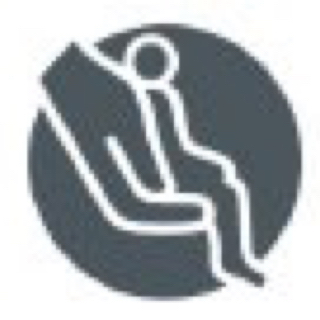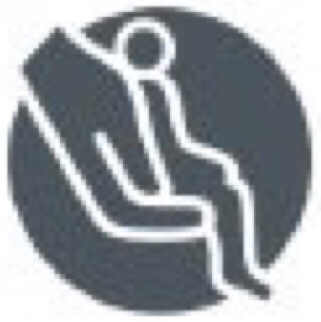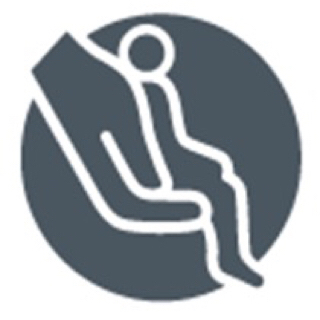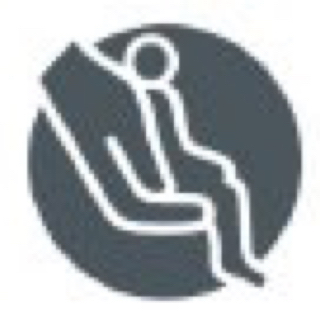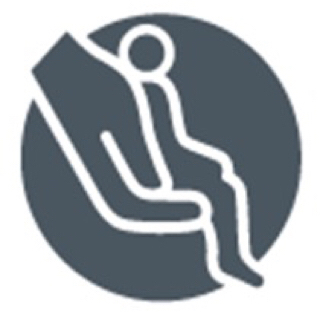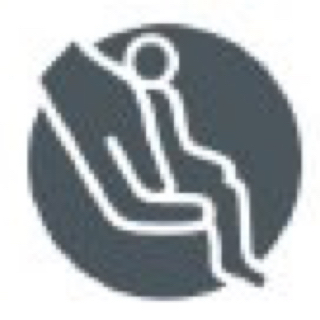Information
-
Audit reference number
-
Description of area/cell/process being audited
-
Site and Department
-
Scope of the audit:
-
Conducted by
-
Conducted on
-
Are there actions which require close out?
-
Revisit date (if there are actions to close out)
General
-
Take photographs and annotate them to help clarify any issues you identify as required in each section. Don't forget to record the good points as well.
You must select compliance level from the options:
OK = Satisfactory (It is working effectively and reliably)
NCR = Non-Conforming (It is NOT working effectively)
OBS = Observation (there may be a slight deviation but generally is working well)
OFI = Opportunity for Improvement (ideas that could make it better than it is)
N/A = Not Audited or Not Applicable (this question does not apply to the area being audited or it was not audited this time) -
Please ensure you write down, or photograph: serial numbers, reference numbers, order numbers etc to ensure that the audit is repeatable
Add a follow up action against the question by selecting the three dots next to the question -
Photograph of area being audited
People Issues
-
OK = Satisfactory (It is working effectively and reliably)
NCR = Non-Conforming (It is NOT working effectively)
OBS = Observation (there may be a slight deviation but generally is working well)
OFI = Opportunity for Improvement (ideas that could make it better than it is)
N/A = Not Applicable (this question does not apply to the area being audited
1. People issues (communication)
-
Guidance:
Is there evidence of communication of:
- Awareness and Understanding of policy
- Consequences of deviations from management systems and how their work activity affects SHEQ
- Clearly defined roles, responsibility, accountability and authority
- Internal communication mechanisms (notice boards, team talks, tool box talks, team briefs etc) with respect to SHEQ
- Communication and consultation with customers, contractors and visitors (H&S and Environmental rules, emergency preparedness, CDM, product information, order handling, customer feedback etc)
- Involvement in H&S Meetings, HAC Meetings etc - How are workers informed? Are they aware?
- Results of accidents and incident investigation
- Results of corrective and preventive actions
- Are process measures clearly communicated (and is what they are clear to the employees) (e.g. Run rates, scrap, accidents etc)
This may be by notice board, team briefs, took box talk, signs, handouts etc -
Is there evidence of communication within the department? (Describe/photograph)
-
Ensure that you complete a follow up action as necessary
2. People Issues (competence and capability)
-
Guidance:
Is there evidence of:
- Competence for personnel performing work affecting quality (education, training, skills or experience)
- Is competency defined for those roles (e.g. Welders qualified, FLT drivers have license etc)
- Are there persons with special needs - have their needs been assessed? (These groups are especially at risk. Young persons because of inexperience and immaturity and pregnancy or disability can affect ability to carry out certain tasks safely (for example manual handling)
- Have temps undergone appropriate induction and task training?
- Have employees been made aware of the consequence of their work on SHEQ?
Look especially for tasks which require specific skills or qualification such as driving fork lift trucks, changing grinding wheels, welding, setting up welding robots, measuring or testing product etc.
Look for evidence of records of training - are they suitable and sufficient? (E.g. Y charts and certification available for example)
Are there issues with understanding (for example language barriers). Is there evidence of stress or violent behaviour? is there evidence of unsafe or environmentally unsound behaviour or practice?
Is there evidence of lack of competence or capability affecting product quality or customer service? Is there evidence of ongoing performance appraisal on persons within the department or area being audited? Is there adequate supervision?
Are skills gaps identified? And how are they filled? -
Are personnel performing work which could impact on the customer, service, health and safety, or the environment, competent and capable?
-
Ensure that you complete a follow up action as necessary
3. People Issues (responsibility and authority)
-
Guidance:
Is it clear what each person's responsibility and authority level is? (Is there evidence of decisions not being made or tasks not been done, because no one is quite sure whose job it is?).
Are the roles clearly defined and documented within a job profile, and if not, how are people informed about their responsibilities and authority levels? Are budgetary levels and responsibilities clear? -
Is responsibility and authority clearly defined?
-
Ensure that you complete a follow up action as necessary
Material Issues
-
OK = Satisfactory (It is working effectively and reliably)
NCR = Non-Conforming (It is NOT working effectively)
OBS = Observation (there may be a slight deviation but generally is working well)
OFI = Opportunity for Improvement (ideas that could make it better than it is)
N/A = Not Applicable (this question does not apply to the area being audited
1. Materials (Hazards)
-
Guidance:
Look for Toxic, Irritant, Sensitising, Corrosive or Carcinogenic chemicals that are in use (including the use of local exhaust ventilation). Check that chemicals are properly labelled (or otherwise identified so it is clear what the contents are and what the corresponding hazards are)
Check that they are listed in the COSHH register, and are used in a safe manner (using the PPE that is recommended).
Check for signs of use of water which might be stale or contain bacteria (such as cooling water) and for signs of water spray in air (Legionella risk)
Look for environmental hazards also, for example use of oils, chemicals hazardous to aquatic life and materials that can cause dust or fume with the resultant risk of explosion, fire or problems with inhalation.
Look for signs of sharp or hot surfaces (e.g. Drilled or machined surfaces, freshly welded items, machining swarf etc) -
Are all materials in use being used safely?
-
Ensure that you complete a follow up action as necessary
2. Materials (Safe Storage)
-
Guidance:
Check all material(s) storage.
- Not exceeding safe working loads for shelving, and safely and suitably stacked (stability and load distribution)?
- is storage suitable for the task?
- Heavy and light items distributed such that the risks of manual handling are minimised and the stability of the storage is maintained?
- Can items fall from racking?
- Are working loads specified for racking?
- Are legs of racking protected from damage?
- Gas bottles restrained?
- Flammable materials away from ignition sources?
- Dangerous substances (like COSHH chemicals) in a locked cabinet?
- Is storage free from spills and leaks ?
- Is it secondary contained as needed (oils and other liquids >5l)?
- Is packing in good condition (damaged boxes etc)?
- Is storage such that it prevents damage or deterioration to the items concerned?
- Does the material in use have a limited shelf life? (Deterioration affecting function for example seals/gaskets etc) ? -
Are all materials stored in a safe manner? (Describe/photograph)
-
Ensure that you complete a follow up action as necessary
Equipment issues
-
OK = Satisfactory (It is working effectively and reliably)
NCR = Non-Conforming (It is NOT working effectively)
OBS = Observation (there may be a slight deviation but generally is working well)
OFI = Opportunity for Improvement (ideas that could make it better than it is)
N/A = Not Applicable (this question does not apply to the area being audited
1. Equipment (Accuracy and capability)
-
Guidance:
Is equipment and machinery in use suitable for its intended purpose and calibrated to ensure accuracy as necessary (if used to validate product quality, or measure environmental emissions or levels, or measure health and safety performance such as noise for example)?
Is equipment's performance consistently repeatable to ensure reliability of the process?
Is equipment capability measured? -
Is equipment and machinery in use; suitable, calibrated and capable? (Describe/photograph)
-
Ensure that you complete a follow up action as necessary
2. Equipment (Safety and effectiveness)
-
Guidance:
Has equipment and machinery that is in use been assessed for PUWER (Provision and use of work equipment regulations) compliance?
Has equipment or machinery been tested as necessary (for example PAT testing on portable appliances)?
Has equipment undergone appropriate statutory examinations if necessary (for example lifting equipment such as cranes, eyebolts, slings etc and they are appropriately marked or colour coded, forklift trucks, fixed electrical panels etc)?
Is all equipment or machinery in use suitably guarded, (with the need to use a tool to remove that guard), to prevent access to the dangerous parts of machinery?
Are all electrical cabinets and other high-voltage sources locked to prevent unauthorised access?
Any sign of unsafe equipment?
Look for examples where equipment or machinery has deteriorated due to lack of maintenance or attention, for example, missing or damaged guards, damaged casings, or cables etc.
Look for examples where such deterioration could result in the efficiency or the capability of the equipment or machinery being compromised
Is there evidence of TPM (Total productive maintenance) -
Is equipment and machinery in use safe? (Describe/photograph)
-
Ensure that you complete a follow up action as necessary
3. Equipment (Training and authorisation)
-
Guidance:
Are personnel using equipment suitably trained or authorised to use such equipment (for example forklift trucks, ladders, changing grinding wheels etc)?
Check personnel are capable of using things like test and measuring equipment correctly
Do records demonstrate that personnel have been trained to operate the process or equipment for the reasons of quality, environmental implications and health and safety implications? -
Is all equipment and machinery used by suitably trained and authorised personnel? Describe/photograph)
-
Ensure that you complete a follow up action as necessary
Environment issues
-
OK = Satisfactory (It is working effectively and reliably)
NCR = Non-Conforming (It is NOT working effectively)
OBS = Observation (there may be a slight deviation but generally is working well)
OFI = Opportunity for Improvement (ideas that could make it better than it is)
N/A = Not Applicable (this question does not apply to the area being audited
1. Environment (Infrastructure of the building and environmental conditions)
-
Guidance:
Is there evidence of unsafe structural elements of the building (e.g. walls, doors, windows, floor etc)? For example, is the floor level and free from damage, obstruction, or slip/trip hazards.
Are the walls/windows/doorframes, secure and free from elements which could fall off or fail to operate?
Look for areas which could potentially be asbestos, look at the condition. If in doubt, refer to the asbestos survey information. Typically asbestos can be used to lag pipework, or cover pipework but it can also be used for the fabric of the building.
If you believe there is asbestos in the vicinity which potentially is damaged, you should immediately report this to the maintenance engineer
Is the in process or storage; lighting, temperature, humidity or other environmental condition present such that it promotes poor quality or deterioration of quality? (For example rusting, moisture condensation etc)? -
Are there issues with the building infrastructure or environmental conditions? Describe/photograph)
-
Ensure that you complete a follow up action as necessary
2. Environment (access and egress and ergonomics)
-
Guidance:
Is there free access and egress to the area being audited? Are fire exits clear? Are there constraints to carrying out tasks due to space or ergonomics of the process? -
Is there sufficient access and egress to the work areas? Are there issues with the ergonomics in the work area?(Describe/photograph)
-
Ensure that you complete a follow up action as necessary
3. Environment (waste, energy and emissions)
-
Guidance:
Are wastes from the process properly segregated and managed? Are recyclable wastes (cardboard, plastics, metal etc) and hazardous wastes (oil contaminated) for example, disposed of in the correct containers?
Are personnel clear on the correct disposal points?
Is equipment turned off when not in use?
Is there any evidence of emissions during the process? -
Are wastes, energy, and emissions properly managed? (Describe/photograph)
-
Ensure that you complete a follow up action as necessary
4. Environment (Fire Hazard)
-
Guidance:
Is there any fire hazard in the area (for example: flammable chemicals in use, cardboard/wood or other flammable materials stored in such a way that they may cause a fire - such as against a hot surface)?
Is there any source of ignition in the area (such as welding, brazing or heaters)?
Is there evidence of blocked cooling systems or ventilation on equipment?
Has a fire risk assessment been conducted in the area/department? -
Is there any risk of fire? (Describe/photograph)
-
Ensure that you complete a follow up action as necessary
Process Issues
-
OK = Satisfactory (It is working effectively and reliably)
NCR = Non-Conforming (It is NOT working effectively)
OBS = Observation (there may be a slight deviation but generally is working well)
OFI = Opportunity for Improvement (ideas that could make it better than it is)
N/A = Not Applicable (this question does not apply to the area being audited
1. Process (change management)
-
Guidance:
If there is change in the department, is the integrity of department procedures/processes maintained?
Look for tasks not been carried out because someone is no longer in the department, changes in priority because of change of leadership or responsibility, or new manufacturing processes/departmental processing being implemented with associated learning curves. -
Have there been any changes in the department/area being audited, and what impact has it had?(Describe/photograph)
-
Ensure that you complete a follow up action as necessary
2. Process (Monitoring measurement of product)
-
Guidance:
Are quality objectives and quality requirements defined for the product (for example quality plans, specifications, work instructions, quality alerts etc).
Are the required verification, validation, monitoring, measurement, inspection and test activities specific to the product carried out correctly? (This could also include visual checks, counts, confirmation of correct product on receipt etc)
Are there suitable records of such inspections and tests?
Is the person responsible for the checks clearly identified?
Check for appropriate testing (for example batch release measurement and testing, process verification testing, and, if necessary, type/approvals testing).
Check also for approval status (if for example, an approval mark is being added to a product, is there evidence of the product being approved?)
Are the results of measurements and tests suitably analysed looking for trends, and possibly indicating need for increased or decreased levels of activity? -
Are all relevant checks and measurements being undertaken and suitably analysed?(Describe/photograph)
-
Ensure that you complete a follow up action as necessary
3. Process (Legal/standards compliance)
-
Guidance:
Is the legislation/standard/specification to which the process must comply known, documented and available?
Is the legislation (if applicable) recorded within the legal register?
Consider hazardous processes, for example working in confined spaces, working at height, compliance to gas standards, transport requirements (hazardous chemicals for example)
Consider items such as import/export documentation, country of origin certification, wooden pallet marking related to treatment etc -
Are applicable legislation or standards/specifications known? Are they available? Are they complied with?(Describe/photograph)
-
Ensure that you complete a follow up action as necessary
4. Process (documentation)
-
Guidance:
Is the process suitably documented via a process flow chart, work instruction, standard operation, specification sheet, quality, environmental or health and safety alert, booklet etc
If not documented, is the person performing the process suitably trained and/or experienced or supervised/monitored)?
Are all documents controlled in such a way that changes are identified, the document having an issue/revision number and date, and is it approved prior to issue?
Are documents legible and identifiable?
Are documents of external origin (such as customer drawings/specifications) suitably controlled? -
Is the process suitably documented and is the input/output clearly defined? (Describe/photograph)
-
Ensure that you complete a follow up action as necessary
5. Process (measurement)
-
Guidance:
What are the key process measures?
Are these displayed? (For example KPI's, departmental charts or graphs etc)? If so, is there improvement noted? if not what actions of being taken to improve things?
Is data generated and analysed looking for trends and the need for action to improve (for example number of near misses/accidents, test results, audit results, product measurement etc)
Is there evidence of controlled machine conditions being outside allowable tolerances?
Are machine software programs (for example cnc bending, robotic welding programs, spreadsheets with calculations or pivot tables, etc) suitably controlled with appropriate safeguards to prevent unauthorised modifications?
Are all softwares stored and retrivable? -
Are key processes measured, analysed, communicated and do they demonstrate appropriate improvement? (Describe/photograph)
-
Ensure that you complete a follow up action as necessary
6. Process (Risk assessment/aspects evaluation)
-
Guidance:
Are processes being undertaken risk assessed? (Examples of risk assessment are: general, task specific, manual handling, COSHH, PUWER, VDU, explosive atmosphere, young, disabled or pregnant workers, noise, fire etc.
Are there any outstanding actions from any such assessments?
Are the processes being undertaken covered by the environmental aspect evaluation? -
Are there suitable risk assessments? And are activities covered in environmental aspect evaluation? Are actions from such assessments dealt with? (Describe/photograph)
-
Ensure that you complete a follow up action as necessary
7. Process (Data and records)
-
Guidance:
Are all data and records, created as part of the process, suitably controlled? (Identified, backed up and suitably stored, with clearly documented disposal and retention periods)
The control of records should include electronic records as well as paper records.
Identify the records within the audit, and ensure that they are covered within the quality record process. -
Are all data records suitably controlled? (Describe/photograph)
-
Ensure that you complete a follow up action as necessary
8. Process (Non-conformance/rework/corrective/preventive action)
-
Guidance:
When the process goes wrong - and results in nonconformance - is action taken to resolve the issue in terms of documenting the problem, disposal action being taken (scrap, rework etc), containment action (making sure the customers do not receive the problem), root cause analysis, and finally corrective action to resolve the root cause?
Additionally, is such failure analysed and improved upon, as well as applying preventive measures proactively?
Is there any evidence that materials in use do not conform to requirements and could affect quality (for example rusty, dimensionally non-compliant, visually non-compliant, deteriorating, etc). If so, are they clearly identified as nonconforming, with appropriate action identified?
Is the product being produced compliant to the specification? For example labels (including barcode labels for example) visual appearance, type of product/material, engraving/stamping etc (check also compliance against any quality alerts, etc).
If the product is non-compliant, is the product being bonded pending a decision? If there a nonconformance raised? Does the shift manager know about it? Is he dealing with it?
Is rework being managed effectively?
If the product is being reworked by the production department, is there a count of scrap/good production? Has the operator been shown what to look for? Are the quality department aware of such rework/sorting? has it been verified as acceptable?
Is the date of manufacture applied to rework rather than the date of rework? Are the component parts being used to rework being kept separate from normal production items to prevent inadvertent use on the wrong job? -
Is there a robust process for dealing with non- conformance in the area being audited? (Describe/photograph)
-
Ensure that you complete a follow up action as necessary
9. Process (Identification and traceability)
-
Guidance:
During the process, is the status of the output of the process (whether it be product or documentation), clear?
Check materials in use (components, raw materials, products etc) are clearly identified in terms of their status and traceability and what they are for (e.g. supplier, batch number, part number, inspection and test status etc)
Is it identifiable, such that it is clear what it is, and what needs to happen to it next?
This identification and traceability would include things such as; part numbers, operator stamps, batch numbers, works order numbers, purchase order numbers, material identification, etc
Check the operators have marked their production.
Is there evidence of stillages which are empty and still labelled with identification tape? Is tape the correct colour for the content?
Are bag and box labels correct and do they match the product in them?
If product is held with awaiting QC tape, is it identified as to the reason why held? -
Are all products and items clearly identified and traceable? (Describe/photograph)
-
Ensure that you complete a follow up action as necessary
10. Process (PPE - Personal protective equipment)
-
Guidance:
Are all personnel wearing PPE which is required for the process (take note of signs and process requirements to identify whether people should be wearing hearing protection eye protection etc)?
Are people suitably trained and made aware of how to use the PPE? Is PPE suitable for its intended purpose (for example a dust mask being used for solvent use, cotton gloves for oil etc)?
Is PPE formally issued and signed for with a date of issue?
Are records of the maintenance of PPE maintained and retrivable. -
Is a PPE being worn when required? Is it suitable and being correctly used? (Describe/photograph)
-
Ensure that you complete a follow up action as necessary
11. Process (unsafe acts/conditions and accidents)
-
Guidance:
Have there been any health and safety, environmental, or quality concerns raised in the area in the last six months? Have there been any accidents in the area in the last six months?
Are there any outstanding actions from surveys and audits from external bodies (such as external bodies, etc)?
If so, has action been taken to resolve the problems?
Has there been any notification to the HSE of any dangerous occurrence? -
Have there been accidents or near misses related to the process? If so what action(s) have been taken?(Describe/photograph)
-
Ensure that you complete a follow up action as necessary
12. Process (Emergency)
-
Guidance:
Is there evidence of emergency preparedness - spill kits, fire extinguishers, fire exits, knowledge of emergency plan, knowledge of what to do in the event of a fire, spill, accident etc?
Is all emergency equipment in operational condition (e.g. spill kits full, spill mats available, fire extinguishers not discharged etc)? -
Is there suitable emergency preparedness?(Describe/photograph)
-
Ensure that you complete a follow up action as necessary
13. Process (Outsourcing)
-
Guidance:
Are any processes or parts of processes outsourced? If so how are these controlled to ensure compliance to customer requirements, environmental compliance, health and safety compliance, etc)?
If these outsourced activities are carried out on our premises, is the contractor managed through permits to work etc.
How do we ensure that contractors working on our premises comply with environmental requirements (such a waste, discharges, emissions etc), or health and safety requirements (such as PUWER, working at height etc).
How do we confirm the quality of the outsourced operation?
How is the outsourced activity approved and controlled? -
Is anything outsourced? if so how is it controlled? (Describe/photograph)
-
Ensure that you complete a follow up action as necessary
Additional checks
Additional Checklist items
-
Additional Check
-
Details of additional check
-
Compliant?
-
Ensure that you complete a follow up action as necessary
